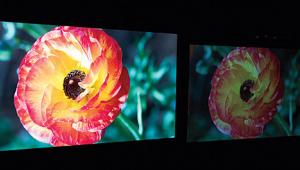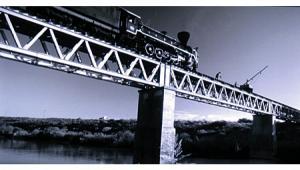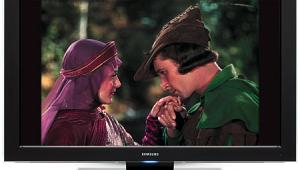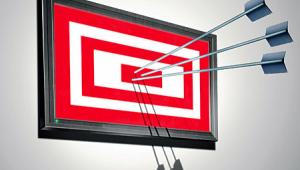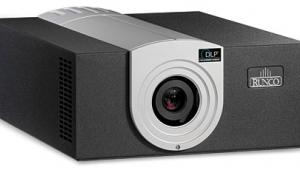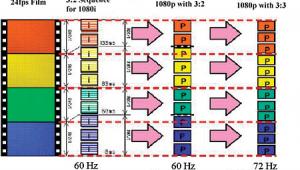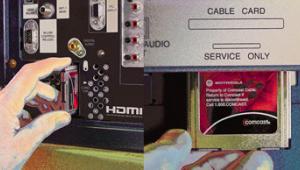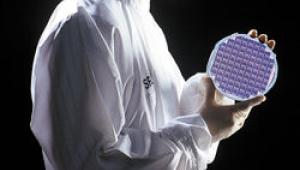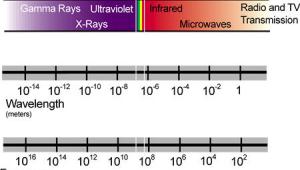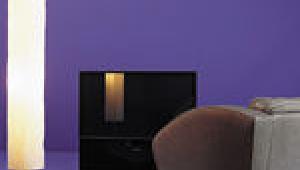Blu-ray Disc Interactivity and You
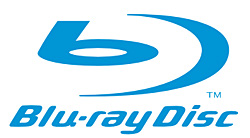 Blu-ray Discs have already been announced that will offer more advanced interactivity that, in my opinion, will be a major value-add for the format. And just so no one thinks I'm being coy, yes, I absolutely mean that the Picture-In-Picture (PIP) and networking features that are and have been available on HD DVD will be coming to Blu-ray.
Blu-ray Discs have already been announced that will offer more advanced interactivity that, in my opinion, will be a major value-add for the format. And just so no one thinks I'm being coy, yes, I absolutely mean that the Picture-In-Picture (PIP) and networking features that are and have been available on HD DVD will be coming to Blu-ray.
While it seems that the most prevalent (by far) Blu-ray Disc player on the market, Sony's PlayStation3, will be compatible with these features, the fact is that none of the standalone players in the market currently will be compatible with many of these new features, and neither will a surprising number of the standalone Blu-ray Disc players hitting this stores fall and winter.
My intention here is to educate you on the nomenclature used to describe the players that will be compatible with these features so you know what you're getting (and what you're not getting) when you buy that shiny new Blu-ray player this holiday shopping season.
Profiles of BD-ROM
BD-ROM Profile is a term, or perhaps more accurately, a specification that refers to the hardware capabilities of Blu-ray Disc players, and these hardware capabilities define a player's ability to play back interactive special features. The platform used for authoring advanced interactivity on Blu-ray Disc is BD-J (for Blu-ray Disc Java); the programming language is Java. The ability of a player to play back certain BD-J features depends on its hardware profile.
Up to this point, BD players have been required only to meet BD-ROM Profile 1 "Grace Period Profile". This basic profile requires 64kb of local storage onboard (typically used for storing bookmarks or user preferences) and is most notable for what it doesn't include which becomes obvious in exploring the latest specs.

Player models introduced after October 31st of this year must meet the BD-ROM Profile 1.1 spec- "Final Specification Profile" (commonly referred to as "Profile 1.1"). This mandates secondary audio and video decoders, which are required for Picture-In-Picture based interactivity and other features that run "in-band" with the movie in real time. Players must have the capability to support a minimum of 256MB of local storage. Note that this is referred to as "local storage," which essentially means that this storage need not be built into the unit. Removable memory or an external hard-drive could be used instead. Tuck that away for a few more paragraphs.
BD-ROM Profile 2 adds mandatory networking capability and increases the mandated local storage to 1GB. This profile will enable players to be compatible with web-enabled interactivity features, being referred to currently as BD-Live.
Keep in mind that if an existing player does not meet the hardware requirements, it cannot be updated to be compatible with either PIP features requiring a secondary video decoder or BD-Live features. If a Profile 1.0 player is to be updated to 1.1, it must be able to support 256MB of local storage and the secondary decoders for the PIP features. No current standalone player we're aware of meets these requirements. A Profile 1.1 player would have to be able to support 1GB of local storage and networking capability (via an Ethernet port or Wi-Fi) to be upgradeable to Profile 2.
For comparison, PIP features have been prevalent on HD DVD practically from the get-go, and all HD DVD branded players have been required to provide these secondary decoders as well as networking capability since the format's introduction. HD DVD discs with web-enabled features began to appear this summer, and all of Toshiba's first-gen players can be firmware-updated to full compatibility with these new features.
While it's true that existing standalone BD players will be able to play back the movie content of discs encoded with more advanced BD-J features, so far that hasn't been a seamless experience. BD discs with BD-J features such as the "Liar's Dice" game on Pirates of the Caribbean are notorious for taking as long as 2-3 minutes just to boot up on some standalone players, and we've encountered many difficulties in actually playing such games, including player lock-ups that required a cold boot by unplugging the unit. Firmware updates to existing players address such issues (and have certainly been required for some HD DVD titles as well), but in some cases have not eliminated the issues entirely.
In my opinion, this is an overly complicated and immature scheme. Think of content providers mulling which features to encode on their discs when players on the market conform to three different sets of hardware requirements. And this is to say nothing of testing such features accurately. And certainly, the current numbers of standalone BD players are so low that the "grace period" profile players will represent a very small percentage of players in the market by next year.
Nevertheless, it's not a stretch to say that HD DVD is a more mature and stable platform in this regard, a point noted by Paramount in its recent defection to exclusive HD DVD support (yeah, and there was something about $150 million too).
Meeting the Deadline
As mentioned above, no current standalone Blu-ray players are Profile 1.1 or 2 compatible. The Sony PS3, however, seems to meet all the hardware requirements for even BD-ROM Profile 2, and this is unquestionably significant if in fact the PS3 will be compatible with these advanced features. Not only is the PS3 the most prevalent HD player in the market on either side with over 1.8 million units in US households alone, make no mistake: it is the lynchpin in Sony's Blu-ray strategy. Sony's plans for Blu-ray's success are so intertwined with the PS3 that there is nothing more foolish than to claim" well if it wasn't for the PS3, Blu-ray would this, or that." There is no separating the two.
However, many people prefer a standalone player over a game console. It's a very welcome sign that Denon has stepped up and announced two players for release late this year that are spec'd for Profile 1.1: the DVD-3800BDCI ($2K) and the DVD-2500BTC ($1,199, "transport" only with only HDMI out). More will certainly follow, but for now Denon is among the very few and the proud in offering Profile 1.1. But there's a big BUT.
While the Denon players feature SD card readers that would seemingly count as the full 1GB of local storage, we saw the back panels of these two players at CEDIA and there were no Ethernet ports. So, it looks as if no no BD-Live will be possible here, ever. (One more thing I'll add: there have been announcements of delays until 2008 for the European intro of these players, but Denon informed me that the US release remains on target for December of 2007.)
Samsung has third-generation BD players coming to market in September and October, plus the Duo HD combi player (plays both Blu-ray and HD DVD discs). These players are coming in before the October 31st deadline, and according to our sources at Samsung, none of the three will be BD-ROM Profile 1.1 compliant. The response I got back from Samsung noted a lack of an official test disc for these features from the Blu-ray Disc Association, and when I asked if the players would meet the hardware requirements, perhaps leaving the door open to a firmware update that would allow full Profile 1.1 or 2 compliance, the answer I got back was no for these players. If this is completely accurate, this is obviously a strike against these players.
Pioneer and Sony also announced third-gen players that will also beat the October 31st deadline and will also not be Profile 1.1 compliant. These include the Pioneer Elite BDP-95HD, Sony's BDP-S500 and even the $1,300 BDP-S2000ES, Sony's first ES designated player (notice this stands for "Elevated Standard" not "Elevated Profile").
Sharp also announced the BD-HP20U Blu-ray player at CEDIA last week. It includes 1080p/24 output and TrueHD for just $550, but it's coming before October 31st, so guess what that means? You guessed it, Profile 1.
One significant add-on here is LG's BH200 Super Blu ($999, mid-October). LG has not yet confirmed specifically that this player is BD-ROM Profile 1.1 or 2, but the wording of the press release suggests both in terms so strong it's difficult to imagine any misinterpretation. The release states the player has the "capability to handle networked BD-Live interactivity" and "advanced options such as Blu-view or Picture-In-Picture available from many Blu-ray Discs."
In addition, the BH2000 will be fully compatible with all HDi –based navigation and interactivity with HD DVD discs, including that format's PIP, and web-enabled features. If indeed this player is BD-ROM Profile 1.1 or even Profile 2, as seems to be the case, this will become one of the most sought after next-gen players on the market and the most advanced BD player next to the PS3.
These are the significant player intros we're aware of right now, but there may be more. The important point here is that many of the new Blu-ray players scheduled to appear this fall will not play back any of the PIP features that will appear on Blu-ray Discs in the future. These features will require the secondary video support of Profile 1.1, which the players will not provide.
Some BD movies have appeared to have PIP features, but so far none has featured a streaming PIP that runs on a secondary video decoder. Instead, content providers have taken advantage of Blu-ray's 50GB storage capacity and simply included an entire second video encode of the movie with the PIP material embedded (Lion's Gate's The Descent is an example). Pixar's Cars has been announced with a "Cine-Explore" feature that will provide an "interactive dashboard interface, which appears in-movie giving the user a customized behind-the-scenes experience." But the best information we have at present suggests that this will also be a separate video encode and not a true streaming PIP feature.
For a lot people the stellar picture and sound quality these players offer will trump their lack of interactivity. And for the record, so far the best standalone players have offered a superior picture with Blu-ray Discs compared to the PS3. The PS3 however, plays back Blu-ray Discs faster with better disc access and overall stability of playback. A great picture doesn't matter when your player locks up and needs a reboot.
Summing It Up
I don't know that interactivity is or isn't going to be the tail that wags the dog for a lot of enthusiasts out there. Personally, I've found the next-gen interactivity more compelling than anything that's come before it as far as bonus material and "extras" go. And more than that, you can't know if these features are worth having if your player can't access them.
But, I think people buying players should know what these players do and what they won't do and make an educated purchasing decision. I don't know, but I suspect that the BD-ROM Profile information will often be small print in the sales lit, especially if it's not at least Profile 1.1. Maybe interactivity doesn't matter to you, but now you know what to look for if that's what you're after.


